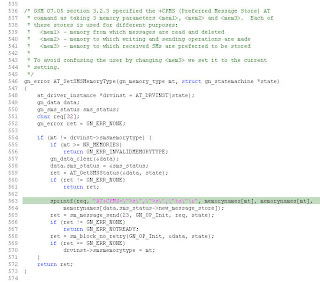To determine the service pack that's installed on your SQL Server, open Query Analyzer. Connect to your server. Execute the following command:
SELECT @@VERSION
GO
The output of this command will be something like the one pasted below. The first line of the output displays the version number of the server. The last 3 digits (build number) of the version number are used to determine the service pack installed on your SQL Server. In this case 194.
Microsoft SQL Server 2000 - 8.00.194 (Intel X86)
Aug 6 2000 00:57:48
Copyright (c) 1988-2000 Microsoft Corporation
Developer Edition on Windows NT 5.1 (Build 2600: Service Pack 2)
Below are the SQL Server version list :
SP Version : 6.00.121
Product___ : SQL Server 6.0
SP Version : 6.00.124
Product___ : SQL Server 6.0
SP Version : 6.00.139
Product___ : SQL Server 6.0
SP Version : 6.00.151
Product___ : SQL Server 6.0
SP Version : 6.50.201
Product___ : SQL Server 6.5 (Hydra)
SP Version : 6.50.213
Product___ : SQL Server 6.5 (Hydra)
SP Version : 6.50.240
Product___ : SQL Server 6.5 (Hydra)
SP Version : 6.50.258
Product___ : SQL Server 6.5 (Hydra)
SP Version : 6.50.281
Product___ : SQL Server 6.5 (Hydra)
SP Version : 6.50.415
Product___ : SQL Server 6.5 (Hydra)
SP Version : 6.50.416
Product___ : SQL Server 6.5 (Hydra)
SP Version : 7.00.623
Product___ : SQL Server 7.0 (Sphinx)
SP Version : 7.00.699
Product___ : SQL Server 7.0 (Sphinx)
SP Version : 7.00.842
Product___ : SQL Server 7.0 (Sphinx)
SP Version : 7.00.961
Product___ : SQL Server 7.0 (Sphinx)
SP Version : 7.00.1063
Product___ : SQL Server 7.0 (Sphinx)
SP Version : 8.00.194
Product___ : SQL Server 2000 (Shiloh)
SP Version : 8.00.384
Product___ : SQL Server 2000 (Shiloh)
SP Version : 8.00.534
Product___ : SQL Server 2000 (Shiloh)
SP Version : 8.00.760
Product___ : SQL Server 2000 (Shiloh)
SP Version : 8.00.2039
Product___ : SQL Server 2000 (Shiloh)
SP Version : 9.00.1399.06
Product___ : SQL Server 2005 (Yukon)
Apart from SELECT @@VERSION, there are other commands too, that show you the build number. Try, sp_server_info and master..xp_msver. In SQL Server 2000, there is a new system function called SERVERPROPERTY, that returns service pack information. Here is an example:
SELECT SERVERPROPERTY('ProductLevel')
GO



